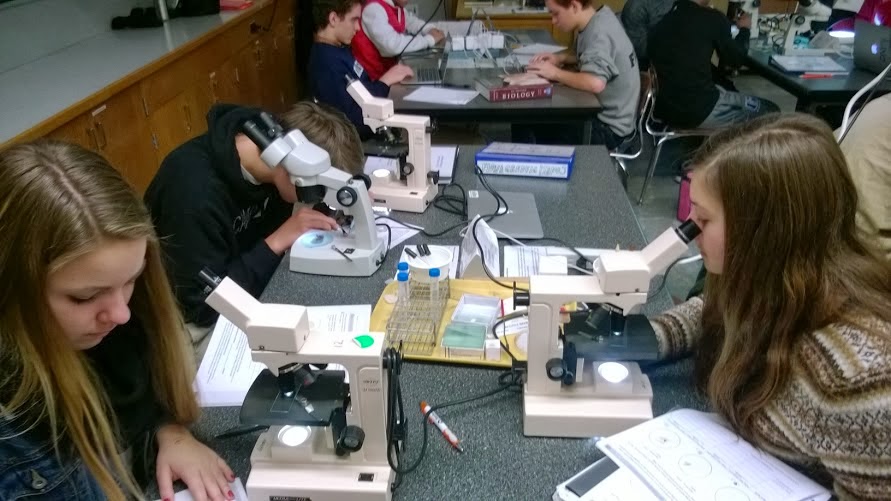Thursday, January 9, 2014
Hypothesis
There will be differences between the pollen found in plants of urban environments and plants of mountainous environments.
Tuesday, January 7, 2014
Phylogenetic Tree Based on Sequencing
Designed by Joe Kilty
Phylogenetic Tree Based on Pollen Morphology
Designed by Joe Kilty
We
arranged our tree in this way (The Sword Fern being less closely related to the
other two species) because the Fern reproduces using sperm, not pollen. This
factor immediately makes the Rose and Indian Pipe more closely related. The
shape of the pollen from the Rose and Indian Pipe is vaguely similar, with the
apertures being located in nearly the same places and a similar surface
texture. The Rose is probably closer related to the sword fern. There are many
more species of Rose and that signifies that it is older.
Experimental Question Analysis
We were
able to obtain sufficient data to accurately answer our scientific question. We
did this with the Scanning Electron Microscope and a special Leica microscope
equipped with a camera. Our data shows that there are different shapes and
sizes incorporated in the designs of pollen. For example, the pollen from a
rose has a poliplicate structure, and this is because they need to be able to
reproduce more easily. The pollen of the indian pipe (Monotropa uniflora)
is harder to determine. Based on our sample, the pollen might not even have a
pore. This changes based on how they reproduce, where their habitat is, and
other factors. Our pictures show that when you move to a different environment,
the pollen shape and size tends to change. One thing we had trouble with was
obtaining and placing the pollen samples for viewing in the SEM. A little more
practice would have been nice, because there is always room for improvement.
However, we were able to quantify and collate the data we obtained in a way that
allowed us to accurately answer our question. When a plant species lives in a
certain environment, that environment influences how the pollen looks. A possible error that could have occurred is that while indian pipe and roses reproduce with pollen, sword ferns do not. They use sexual reproduction, which we were not aware of at the front end of our experiment.
Monday, January 6, 2014
Background Information
Rose
- Roses, an extremely popular flower, have many different varieties (100 different species) that grow all over the world.
- They originated in Asia.
- Different types of roses can range from a few inches high to several meters tall.
- They are most commonly used for fragrance and decoration.
- Many wild roses are host plants for many pests and diseases.
- The thorns of a rose are technically called prickles.
- Roses contain several ovaries in one flower rather than one.
- Pollen in found in the anther of a rose and is usually colored yellow.
sources:
Indian
Pipe
- The Indian Pipe is also known as corpse plant.
- This plant doesn’t have chlorophyll.
- Indian Pipes usually grow 4-10 inches tall.
- It is often confused to be a fungus.
- Indian Pipe grows in shady woods.
- They are often found near decaying stumps.
- Indian Pipes take nutrients from trees and fungus.
- It grows in densely shaded pine wood forests.
- They will usually have 4-6 petals and 10 stamens, which are pollinated by insects.
- After fertilization, the flowers will point upwards and turn black.
sources:
Sword
Fern
- To reproduce, the sword fern grows a small heart shaped plant called, prothallium. Prothallium has egg cells and sperm cell and when the climate is wet enough, they combine together to create a new Sword Fern.
- Ancient plants that evolved long before plants had flowers.
- Sword Fern grow from 50 to 180 centimeters.
- They grow best in coniferous forests.
sources:
Subscribe to:
Posts (Atom)


